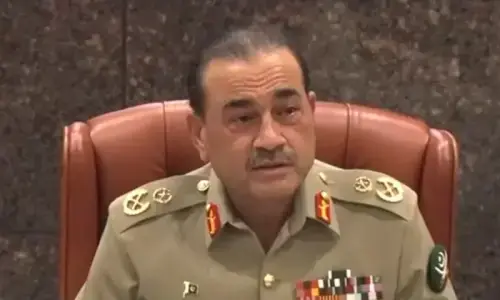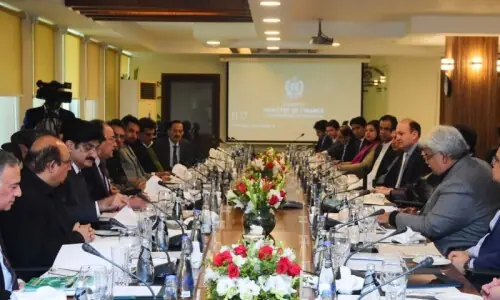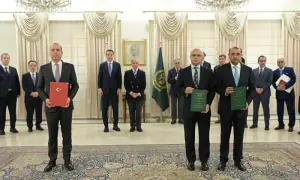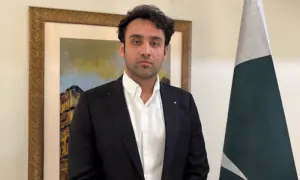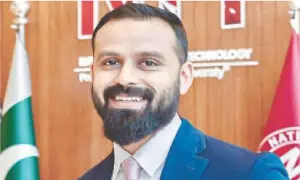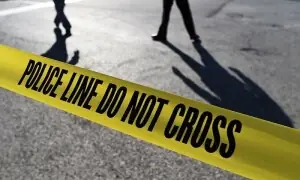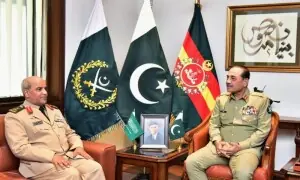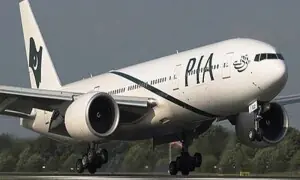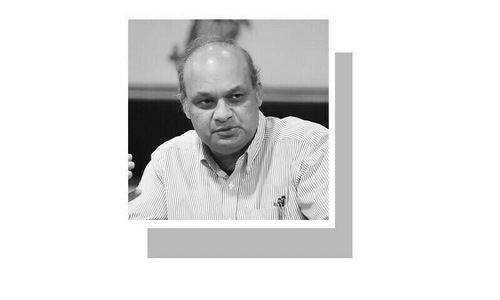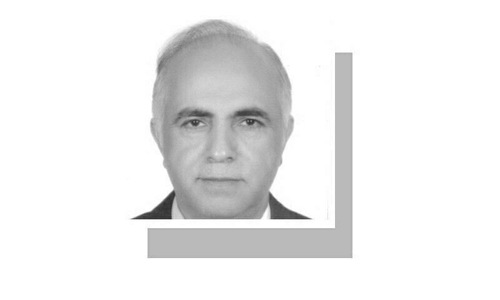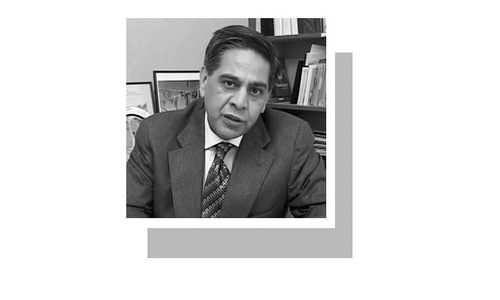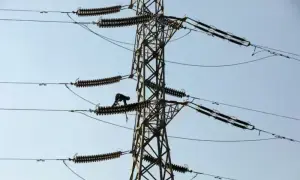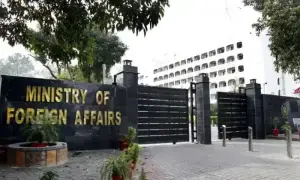The MRD Movement in 1983 was one of the biggest uprisings against the Ziaul Haq dictatorship. In Sindh it almost tipped over and become a full-fledged armed insurgency against the state.
Sindh, September, 1983. The agitation by the Pakistan Peoples Party (PPP) led Movement for the Restoration of Democracy (MRD) is whirling out of control, not only for the reactionary dictatorship of General Ziaul Haq but for the MRD leadership as well.
Ever since MRD announced the beginning of a nationwide movement against the Zia regime (August 14, 1983), the Pakistani province of Sindh is in great turmoil.
Its capital Karachi is witnessing court arrests and protest rallies on a daily basis by labour and trade unionists, student leaders and anti-Zia politicians.
But it is the central and northern parts of the province that are in the grip of serious violence. The MRD movement here has taken the shape of a Sindhi uprising bordering on a Sindhi nationalist insurgency against the Pakistan Army.
Faced with a volley of questions (mainly by foreign journalists) regarding his military regime’s challenged legitimacy in Sindh, Zia decides to prove that ‘only a handful of troublemakers’ are involved in the violence taking place against his government in the troubled province.
So, the grinning general (after issuing a fresh round of curbs on the already restricted local media outlets), announces that he will take a whirlwind tour of Sindh to attest that he is as popular there as he (thinks) he is in the Punjab.
So off he flies in his big shiny military aircraft (C-130) with some of his ministers, military cronies and his favorite batch of journalists to Karachi. He is however, aware that BBC Radio has imbedded a host of reporters in Sindh who are covering the MRD movement.
The reporting is largely being done for the BBC Radio’s Urdu service that a majority of Pakistanis have been listening to – especially ever since Zia (a migrant, conservative Punjabi general) toppled the government of the country’s first popularly elected prime minister, Zulfikar Ali Bhutto (a well-to-do but populist Sindhi who was equally well-liked in the Punjab).
Zia’s plane lands in Karachi. From here he plans to fly to Hyderabad with his posse. Joining him here is a crew from the state-controlled Pakistan Television (PTV) that will cover the general’s ‘successful tour of Sindh.’
The rallies being taken out against him by leftist students, journalists, trade unionists, women rights groups and politicians in Karachi don’t bother him.
Most of the country’s senior anti-Zia leadership has already been put behind bars, while the second tier leadership of agitating student outfits, trade and journalist unions and anti-Zia political parties ‘are being made an example of’ by being publically flogged.
MRD was formed in 1981 as a PPP-led alliance to agitate against the Zia dictatorship and to force him to end military rule and hold elections. The alliance’s core parties were: Pakistan Peoples Party; Pakistan Democratic Party; Pakistan Mazdoor Kissan Party; Pakistan National Party; National Awami Party; Qaumi Mahaz Azadi Party; and Jamiat Ulema Islam.
It was also being supported by Jamiat Ulema Pakistan, as well as by various left-wing Sindhi nationalist parties, progressive student organisations, trade unions and women’s rights groups.
Zia, after arriving in Karachi, briefly talks to a select group of journalists and reiterates his views about the situation in Sindh, insisting all was well, and that the MRD movement was the work of a handful of politicians who were working against Islam, Pakistan and the country’s armed forces.
He sounds confident about the success of his visit to the troubled spots of the Sindh province. This confidence was not only built upon what he was hearing from the sycophants that he’d gathered around him in the shape of ministers, military personnel, religious leaders and advisors.
But also because by the time he reaches Sindh’s second largest city, Hyderabad, he’s already had telephonic conversations with Sindh’s most respected nationalist leader and scholar, GM Syed.
Syed was the architect of the historical and scholarly narrative behind Sindhi nationalism and separatism. After building up a powerful narrative against the ‘Punjabi ruling elite,’ Syed formed the Jeeay Sindh Tehreek and (in 1973) called for Sindh’s separation and independence from Pakistan.
Ironically, when Sindh erupted during the MRD movement in 1983, Syed was nowhere to be found. He decided to stay out of the movement, a fact cleverly exploited by Zia.
This was a decision that would cause Syed his political career. Though respected as the ‘true son of Sindh’ and the Sindhi nation’s greatest scholar till the time of his death in 1995 (and even now), Syed however, lost his political clout when a major faction from his Jeeay Sindh party and its student-wing, the JSSF, broke away and joined the MRD movement.
Syed was no fan of the military, particularly not of Zia, a Punjabi running an army majority of whose recruits too were from the Punjab. But Syed saw MRD as a PPP-run show, a party run by the Bhuttos.
Now here was another irony. Syed also detested PPP’s founder and chairman, Z A. Bhutto, even though the latter was a fellow Sindhi. During the 1968 movement against the Ayub Khan dictatorship (that had turned Bhutto into a popular leader in Sindh and Punjab), Syed had accused Bhutto of ‘helping the Punjabi establishment to retain its hold over smaller provinces and former East Pakistan.’
When, after the fall of East Pakistan, Bhutto came to power, Syed again accused Bhutto of using democracy to constitutionally reinvigorate the lost prestige of the military and the ‘Punjabi establishment’ and consequently stunting Sindh’s nationalist movement.
Syed was always of the view that the ‘Punjabi establishment’ will use Bhutto to regenerate itself (after the humiliation of the 1971 defeat to India), and then throw him away.
At least that’s how he explained Bhutto’s execution at the hands of Zia’s dictatorship. In fact, when Bhutto was hanged (through a bogus trial) in April 1979, Syed went on record to say: ‘I hope they (the ‘Punjabi ruling elite’) realise that today they have executed their greatest ally.’
Syed’s logic for not taking any part in the MRD movement is linked to his perception of the PPP being a party that is being used by the ‘Punjabi ruling elite’ to keep nationalist sentiments in Sindh at bay.
This narrative was well known by Syed’s admirers. But what shocked many of them was not really the act of Syed not taking part in a PPP-led movement, but the fact that Syed was actually responding to Zia’s friendly overtures towards him.
Syed’s apologists have suggested that Syed did this to neutralise Bhutto and the PPP’s influence in Sindh so he could construct a Sindhi nationalist and separatist movement on his own terms.
Though Syed’s Jeeay Sindh party would eventually go on to split into over a dozen factions, in 1983 however, Syed sat pretty but nervous, watching the MRD movement in Sindh fast becoming a Sindhi nationalist uprising – without him.
In Hyderabad, Zia talked about the inherent patriotism of all Sindhis. By this he meant not only indigenous Sindhis, but the Urdu-speakers (Mohajirs) and the Punjabis settled in the province as well.
Radical left-wing Sindhi nationalist leader, Rasool Baksh Palejo, scoffed at Zia’s comment. Palejo was languishing in a jail at the time, but a Sindhi newspaper managed to publish his reaction.
Palejo, though not a Syed disciple, echoed Syed’s original narrative about Mohajirs. Syed had accused them (in the 1960s) of coming to Sindh (as migrants from India), but instead of integrating themselves into Sindhi society and culture, they had started to behave just like the invading Europeans had done against the Red Indians in America.
In 1983 there was no Mohajir/Mutahidda Qaumi Movement (MQM). The Mohajir majority in Karachi and Mohajirs in the rest of Sindh were voters and supporters of three main political parties.
The progressive Mohajirs were associated with the PPP and with various leftist student outfits such as the NSF; the conservative Mohajirs backed the Jamat-i-Islami (JI) and Jamiat Ulema Pakistan (JUP).
After the rise and growth of MQM in 1986 however, almost every Mohajir would go on to become a MQM devotee.
But in 1983 there were just a few Mohajir nationalist organisations, all of them small and largely based out of Hyderabad. They too decided to sit out the MRD movement.
The Sindhi nationalists’ biggest grudge during the MRD movement, however, was with the Punjabi settlers. Sindhi nationalists had been accusing the Zia regime of sending and settling ambitious Punjabi traders and agriculturalists in Sindh to prop-up a constituency for himself in the province.
The nationalists claimed that these settlers were taking over Sindhi businesses and jobs and siding with pro-Zia feudal lords to repress Sindhi nationalism.
Zia knew that the pocket rallies he was to address beyond Hyderabad will be organised by outfits run by these settlers; outfits like the New Sindhi Organisation and the New Sindhi Students Organisation (NSSO).
_________________________________
So on he went to tour the troubled interior of the Sindh province. He particularly wanted the cameras to capture his tour of Dadu and Moro, the two cities most affected by the movement.It was decided by his security team that he will use an army helicopter to fly there. His aids seemed a tad fidgety and nervous, because to curb the movement, the military had begun to use tanks and heavy weaponry, wiping out whole villages in the process.
The thick forests around Moro and Dadu had become sanctuaries for hundreds of activists escaping Zia’s tanks and gunships. Another rallying point for the activists, mostly angry young men, were the many big and small shrines of Sufi saints across Sindh.
As Zia sat in the helicopter, waiting to land in Dadu, some of his military advisers shared with him the army’s latest triumphs in the area: Hundreds of ‘troublemakers/traitors/agents’ had been arrested and eliminated, he was told. And that a plan was also afoot to flush out rebels from the shrines and the forests.
That had made Zia even more nervous. Most influential pirs of Sindh were already opposing him, especially the Pir of Hala. So Zia contacted another influential pir, Pir Pagara, asking him to use his influence to make the keepers of the shrines reject Sindhi rebels.
Pagara tried, and failed. But thankfully, no tanks were sent to the shrines.
_________________________________
One September evening of 1983, Pakistanis watched a video clip on PTV’s 9 pm Urdu news showing Zia descending from an army helicopter and being greeted by a dozen or so smiling men in Sindhi caps.Viewers were told that Zia was ‘warmly greeted by patriotic Sindhis during his tour of Sindh.’ Zia seemed to be beaming.
The next day, however, when Pakistanis tuned into BBC Radio’s Urdu service at 8 pm, the BBC newscaster after detailing the nature of the day’s rallies, protest marches and violence in Sindh, added two more reports from the BBC correspondent covering Zia’s trip.
These reports also became the topic of amusement at the Karachi Press Club that too was heavily involved in accommodating the journalists taking a direct part in the movement.
This is what happened: As Zia’s helicopter landed at a helipad in Dadu, he was greeted by a few men wearing Sindhi caps. He was then escorted towards a bulletproof limousine, followed by army jeeps. He was expecting the roads of Dadu to be lined up by Sindhis cheering his arrival. In fact he was sure that his men had done well to organise a colourful show of his popularity for the TV cameras.
His motorcade moved into the city, on way to a building where he was expected to speak to the press. To his satisfaction, he did find a sprinkling of people on the roadsides, holding little Pakistani flags, until his speeding limo almost hit a stray dog.
But this was no ordinary dog. It had been pushed in front of the general’s motorcade by the small roadside crowd. On the dog’s tense body something (in Urdu) was scribbled with red paint. It said: ‘Ziaul Haq!’
The journalists and the BBC correspondent accompanying the motorcade were not sure what Zia’s reaction to this was. But this is not all.
As the motorcade moved on, a donkey was being made to run on the edges of the scruffy Dadu road that Zia’s limo was travelling on. The poor beast was being chased by small kids and on its body too the red paint screamed Zia’s name.
So much for the show of pomp and popularity the general was expecting from his aids.
The general’s limo now gathered speed, until it came to a bumpy portion of the road. Here it slowed down. In front of the limo was an army jeep. The jeep came to a sudden halt and soldiers rushed out. What happened?
A middle-aged man, hiding in a tree whose branches hung over this part of the road had suddenly jumped (from the tree) and landed right in front of Zia’s motorcade.
The man was wearing a traditional Sindhi dress that also included a dhoti (a long piece of cloth wrapped around the waist, reaching till the ankles).
As the man was about to be hauled up by the soldiers, he lifted his dhoti to expose his privates and shouted (in Sindhi) ‘Bhali karey aya! Bhali kary aya!’ (Welcome! Welcome!).
Nobody knows what happened to the gentleman/flasher after he was arrested. But Zia did decide to end his ‘famous’ tour of Sindh the very next day – terming it a ‘great success.’
References: DAWN (August/September 1983) BBC Radio’s Urdu Service archives Author’s personal interviews with Miraj Muhammad Khan (2009) A. Ahmed’s ‘The Rebellion of 1983’ AA Chandio’s ‘Struggle for Democracy in Sindh’

The views expressed by this blogger and in the following reader comments do not necessarily reflect the views and policies of the Dawn Media Group.











